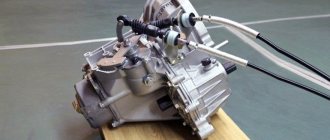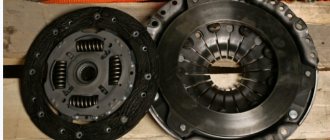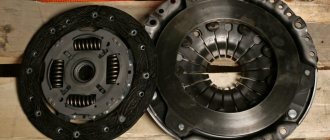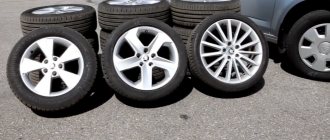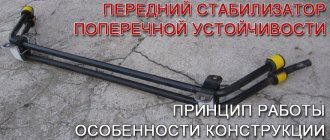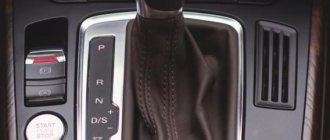In mid-2016, AvtoVAZ officially abandoned the use of manual transmissions from the French manufacturer Renault. The reason is the high cost of the “product” and the lack of a base for maintenance.
If domestic gearboxes cost 20–25 thousand rubles, then imported ones reached 45–50 thousand. Obviously, such a rise in price automatically increased the cost of the car as a whole. Perhaps because of this factor, many car enthusiasts preferred a model with a classic automatic or robotic option.
However, there are those who claim that the quality of production of domestic new mechanics (21087) is inadequate. They are ready to pay an additional 30,000 rubles for the French version. Let's compare the Renault JH3 (JR5) manual transmission and the VAZ 21087 manual transmission.
Specifications
| Name | Renault JH3 (JR5) | Manual transmission - 21087 |
| type of drive | Wire rope | |
| Number of speeds | 5 | |
| Main couple | 3,9 | |
| Gear ratio | 3,87 | 3,94 |
| Acceleration to “hundreds” | 11,2 | 10,2 |
| Maximum speed (km/h) | 175 | 188 |
| Fuel consumption (l/100 km) | 6,9 | 7,5 |
| Gear ratios for each gear | 3,636; 1,950; 1,357; 0,941; 0,784 | 3,727; 2,048; 1,393; 1,029; 0,795 |
Installing a shorter main pair increased the dynamics of acceleration, taking one second from the French “brand”. Adjusting the gear ratios for each gear made the transitions to higher gears smoother, without jerking, and dynamic.
What kind of gearbox does the Lada Vesta have (manual)
Initially, the Lada had AvtoVAZ gearboxes. But driving with them was not very comfortable due to the strong rumble they made. In order to “keep the brand” and not spoil the image of the domestic auto industry, manufacturers decided to replace the native mechanics with French ones - Renault JH3. The cost of these units is much higher than those of AvtoVAZ, and repairs are more expensive due to imported spare parts.
Replacing a Renault JH3 gearbox with a VAZ-21807 gearbox
It was the unfavorable price of the Renault box that forced the plant to reconsider the issue of the Lada Vesta configuration. Nowadays, domestic cars are equipped with VAZ-21807 “mechanics”. This is an improved version of the VAZ-2180 box. The new gearbox has the following advantages:
- designed for increased torque;
- does not make noise like the first version of the VAZ-2180 gearbox;
- more hardy;
- Spare parts for repairing a Lada Vesta VAZ-21807 manual transmission cost less than for a Renault transmission.
- after re-equipment, the acceleration time of the car decreased;
- The maximum speed has increased.
But there are also negative aspects. Fuel consumption increased from 6.9 to 7.5 liters per 100 km in urban mode. The price of these cars has not decreased, although initially the manual transmission was replaced precisely for this purpose. In addition to Vesta, Priors, Grants, and Kalinas are equipped with such boxes.
What do we have today - manual transmission Renault JH3 or VAZ-21807?
Since the end of 2016, all Vestas have been produced with VAZ mechanics. Naturally, car enthusiasts today own cars with both French and domestic mechanics. The gear shift lever remains the same. Therefore, you will not be able to determine the model based on the interior configuration of the box. It is easy to understand which version of the gearbox is in the car by the VIN number. If the code is GFL 13, then it is a Renault gearbox, and if the number is GFL 11, then it is an AvtoVAZ manual.
Design and diagram of manual transmission on Lada Vesta
| Name | Data |
| Type | Mechanics |
| Factory index (article) | 21087 |
| Drive unit | Front |
| Engine capacity | 1,8 |
| Torque | 170 Nm |
| Default oil type | ZIC GFT 75W-85 |
| Oil volume | 2,2 |
| Lubricant replacement | Every 75,000 km |
| Filter update | Likewise |
| Average service life before major overhaul | 180000 km |
| Compatibility | Lada Vesta, X-RAY with engine capacity 1.6 / 106 hp., 1.8 / 122 hp. |
Related link:
Side mirrors of Lada Vesta.
Checkpoint operation diagram
To find out the transmission type of your car, look at the VIN code:
- GFL11: mechanics;
- GFL12 - AMT box;
- GFL13 ─ mechanics from Renault.
VAZ mechanics
Let's start with the simplest and most affordable option. This is a VAZ 5-speed manual transmission with the VAZ-21807 index. It works with an engine with index 21129 with a displacement of 1.6 liters and a power of 106 hp. With.
The box, due to its design, holds torque up to 170 N*m. The transmission is a deeply modernized VAZ-2112 gearbox. Structurally, like the previous version, it is combined with a differential and a main gear, the gear ratio of which is 3.9.
The design of the gearbox remains unchanged. Unlike its predecessor, this box was freed from rigid traction, and the control mechanism received a cable drive, like in foreign cars. This solution allowed to reduce noise and vibration levels. Gears began to engage more clearly, and shift strokes decreased.
The gear selection mechanism has moved from the lower position of the box to the upper one. This made it possible to reduce the filling volume by a whole liter. Vesta's clutch drive, unlike Granta's, is hydraulic. The filling volume of the box is 2.2 liters. Rosneft Kinetic semi-synthetic oil with a viscosity of 75w85 of class GL-4 is poured as standard. It maintains working properties down to -42 degrees.
The instruction manual states that the oil filled from the factory is designed for the entire service life of the unit and does not require replacement. But I think that this point was most likely prescribed by marketers, not engineers. Therefore, I advise you to change the oil at least every 75 thousand kilometers, or 4 years of operation of the car, whichever comes first.
In terms of reliability, the option performs very well. The first versions of this box often had problems with the 1st and 2nd gear synchronizers, which quickly wore out. There was a characteristic crunch when switching, there were problems with the shaft bearings, which could begin to hum already in the early runs. The 807 box does not have these problems.
The only unpleasant moment that you may encounter at high mileage is oil leakage through the sealant at the junction of the gearbox housings.
Pros and cons of mechanics
This is the cheapest and simplest manual transmission that can generally be found on a new car. Taking into account the modifications, it can be called reliable and unpretentious. She doesn't require any attention. The resource of the box is 150-200 thousand km. Its repair in any service will not require a lot of money and time.
There is one drawback - of all the available options, the box is the noisiest. Transmission noise has become less compared to the traditional VAZ gearbox. But it can still be heard in the cabin in certain driving modes, especially when releasing the gas in 1st and 2nd gears. AvtoVAZ engineers were able to completely eliminate the remaining defects.
“Pros” and “cons” in comparison with an automatic machine (robot)
| Advantages | Flaws |
| Acceleration dynamics have become better, the car picks up speed faster | Increased fuel consumption in the combined cycle |
| The car is 30 - 35 thousand cheaper when purchased with a manual transmission | Crunching, creaking when driving at low speeds |
| Long service life | |
| Cheapness of spare parts and components | |
| The car is more expensive on the secondary market compared to the robotic version | |
Variable speed drive
And, of course, fans of the Tolyatti auto industry are looking forward to the appearance of the promised CVT in 2022. According to preliminary information, a variator with an imitation of 7 steps will first be offered in combination with the Nissan 1.6L HR16 engine, since we are talking about the Jatco JF015E transmission, which is designed for torque up to 160 Nm. It is quite possible that in the future the CVT continuously variable transmission will be gradually adapted to its own 1.8L engine.
The advantages of a CVT over an AMT are obvious. This is, first of all, the convenience of speed control. Cars with CVT pick up speed especially smoothly, without jerks or dips. They have a smoother ride and more dynamic acceleration than AT cars. The CVT is significantly quieter and more economical than classic torque converter transmissions.
Malfunctions and ways to eliminate them
| Malfunctions | Troubleshooting Methods |
| Transmission howl at 2000 – 3000 rpm | Insulation lining for gearbox control cables |
| Knock at idle | Replacing the pressure bearing |
| Critical wear of gears and teeth | Replacement with new ones, cannot be restored |
| Oil leaks from seals are less common. | Replacement of sealing seals with new ones. Overhaul of gearbox |
Service life - from the factory and actual
The manufacturer in the operating instructions indicates an average interval of 180,000 km before major repairs. In fact, the mechanics last up to 200,000 km, provided that the manufacturer’s recommendations for care and maintenance are followed.
At the stage of using mechanics, breakdowns associated with depressurization of the system, oil leakage, and wear of the pressure bearing are most often recorded. Malfunctions are insignificant, not critical, and can be eliminated in a few hours of work by technicians at a service station.
Conclusion
The manual transmission under the factory code 21087 is a real technological breakthrough of domestic engineers. The transmission turned out to be not only more powerful, but also faster. At the same time, fuel consumption increased by 0.5 liters.
“Mechanics” has its advantages and disadvantages compared to the robotic version. Therefore, before purchasing, carefully analyze the technical characteristics of each type of gearbox.
Related link:
Specifics of the dashboard firmware on the Lada Vesta.
From personal experience I will say the following:
- The mechanics are most adapted for active use on rough terrain.
- The robotic version, “automatic”, is mainly used for high-speed modes.
Gearbox AMT 2182
AMT (automated manual transmission) is a development of a Russian manufacturer that is worthy of attention. The box is controlled by an electromechanical drive, which is perfectly suited to domestic climatic conditions. Unlike hydraulic analogues, the box does not “freeze” in winter and does not require warming up before driving. The electronics cope perfectly with all the commands of the control unit, relieving the driver of tasks such as pressing the clutch pedal and changing gears. The only drawback of AMT can be considered slow gear shifting, which is clearly not suitable for those who like to “put pressure to the floor.”
In the production of the AMT 2182 gearbox, the VAZ-2180 manual transmission was taken as a basis. The box was equipped with a primary shaft rotation speed sensor and a gear shift control system from the German company ZF.
The designation GFL12 in the VIN code indicates that a “robot” is installed on the car.
Thanks for subscribing!
Reviews
| № | Positive |
| 1. | Dmitry , 33 years old (drive2.ru): they can’t say anything bad about the mechanics, the gearbox works properly. The car is only a year old, I regularly undergo maintenance, I don’t drive, I drive carefully. |
| 2. | Vyacheslav Petrovich , 47 years old (prom.ua): in a year and a half I drove about 20,000 km, mileage is above average. Impressions of the new mechanics are only positive. There is something to compare with; before this there was the Lada Granta. Grantmakers understand what I'm talking about. |
| 3. | Alexander Alekseevich , 43 years old (drom.ru): after buying the car, I changed the transmission oil for the first time at the 7000 km mark. I didn’t wait for 75,000 km, as the manufacturer recommends. The waste was of a natural color, metal shavings were present, but their quantity was insignificant. I did the same. |
| 4. | Alexey Petrovich , 48 years old (rozetka.ua): I’ve heard numerous negative reviews about the mechanics, I can’t confirm. I believe that the technical condition and performance of the unit depends on the driver. I don’t have any problems with this, I take care of my equipment. |
| 5. | Semyon Vyacheslavovich , 40 years old (Auto.ru): This is the second year since I bought and actively use a Lada Vesta on the mechanics. The review is positive, there are no comments about the work. |
| 6. | Vasily Timofeevich , 43 years old (Auto.Mail.Ru): for a year and a half of using a car with mechanics, he once made an unscheduled visit to a service station for diagnostics. I was at fault for the hum in the manual transmission, but it was the suspension. I hope that the device reaches the 180,000 km specified by the manufacturer. |
| 7. | Dmitry Gennadievich , 41 years old (drive2.ru): I like the mechanics more than the robot, I drove the AMT for three months, I can compare. Both robot and automatic are not adapted for domestic roads. The units do not last long, so it is better to buy a manual transmission. |
| 8. | Sergey , 35 years old (drive2.ru): on the mechanics, as soon as I pressed the pedal, I pressed it. And overtaking, and maneuverability, without kickdowns, delays in switching. Choice: definitely mechanics. |
| Negative | |
| 9. | Dmitry Semenovich , 52 years old (prom.ua): no matter how hard we tried, a miracle did not work. We decided to save several tens of thousands, but for the wrong reasons. It would be better to make the plastic cheaper than to install a Russian gearbox instead of a French one. Knocking and noise in the manual transmission was detected at 40,000 km. With such a low mileage there are such significant defects. |
| 10. | Gennady , 46 years old (Bibika.ru): after 30,000 km, cases of clutch slipping, delays when changing to higher gears, and howling of the gearbox became more frequent. You need to go to a workshop and order diagnostics. Couldn’t it have been done better from the start? |
| 11. | Boris , 38 years old (drive2.ru): at 25,000 km a gearbox whine appeared on a Lada Vesta. The officials said that the pressure bearing needs to be changed, but this is not certain. The final diagnosis will be announced after a comprehensive diagnosis. |
| 12. | Sergey Gennadievich , 45 years old (Avtodispatcher.ru): a knock in the gearbox was detected already at 31,000 km. Initially the fault was with the suspension, but after diagnostics the technician assured me otherwise. |
Related link:
Ambient temperature sensor Lada Vesta.
